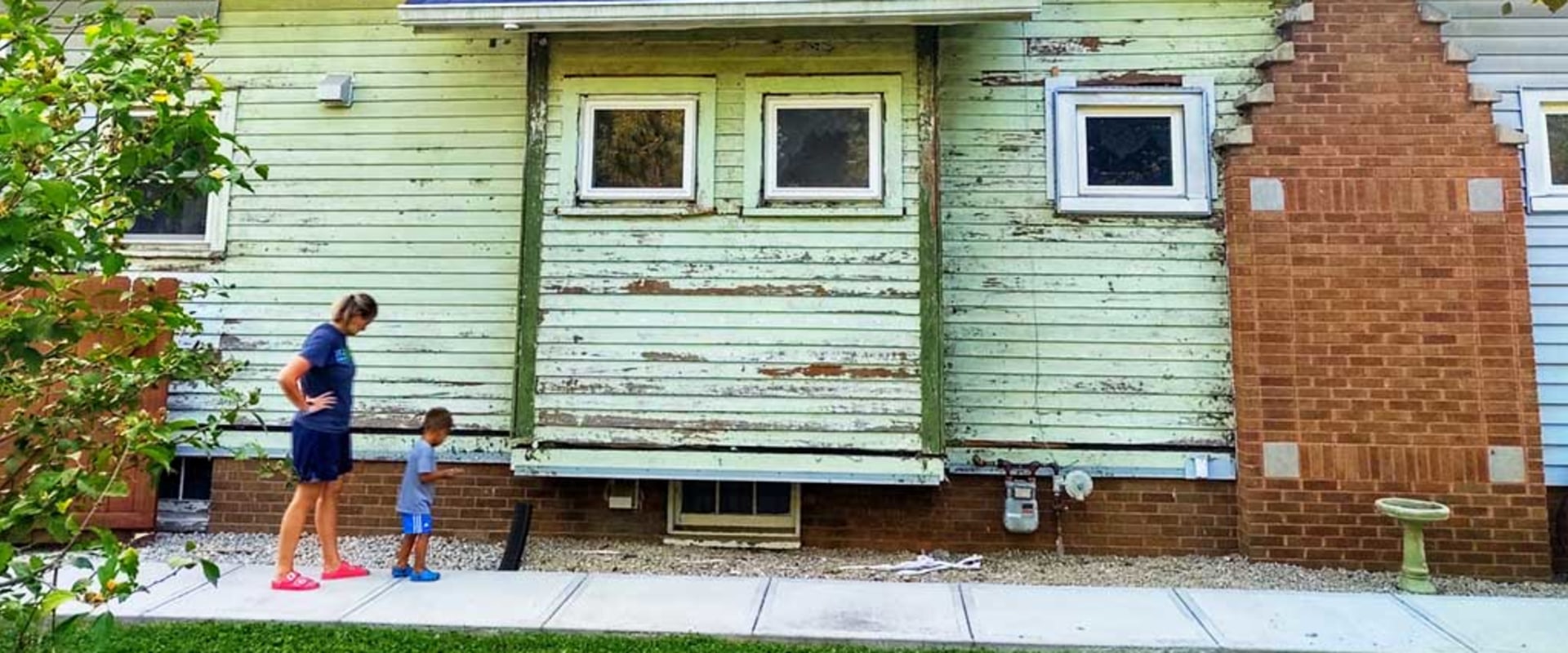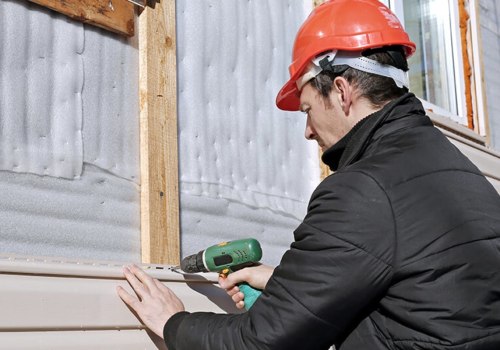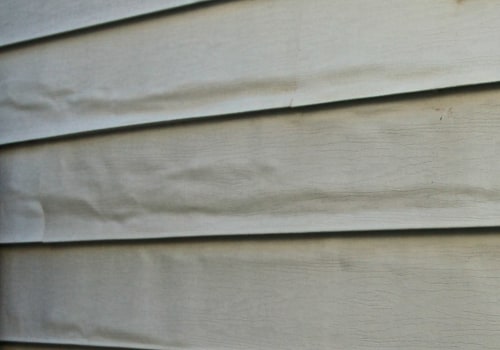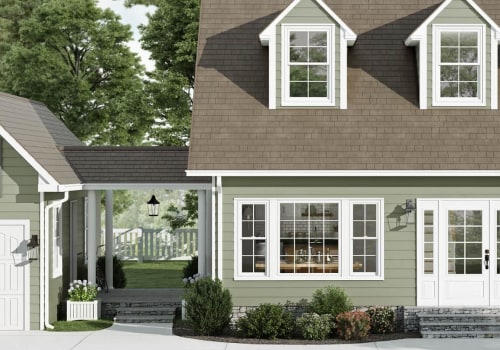It is a relatively new material used in cladding and flooring and was not commercially available until the 1950s. It was created as a replacement for aluminum cladding. One argument against vinyl is that it cracks, fades, sinks and that it will make your house look poor quality (much to the chagrin of your neighbors). The smooth surface of the vinyl coating means dust, cobwebs and other debris slide off relatively easily when sprayed with a garden hose.
Because there's no paint to peel off, you'll never have to scrape, patch, prime, and paint the exterior surface of your home. When vinyl siding burns, it releases toxic fumes and creates acid smoke. Acid smoke is so strong that it can kill a person inside the house before flames or carbon monoxide. Replace damaged boards, call painters.
You prefer to spend money on maintaining the wood material, rather than throwing it down the drain on something that will inevitably end up in landfill. Many homeowners who plan to install or replace existing siding are often hesitant between vinyl and. Wood siding as the two best options available on the market. Wood has been the favorite material for siding until vinyl siding appeared in the 1950s.
There are few issues in the entire field of residential construction products that draw lines of battle as sharp as vinyl siding. Proponents insist that it never needs painting, while its detractors insist that houses should never be covered with anything but real wood. As a building material, vinyl siding is relatively new, it was introduced in the late 1950s as a substitute for aluminum siding. But its reputation was tarnished in the early days when it cracked, faded, bent and sank.
Continuous changes in product chemistry and installation techniques have improved product performance and increased acceptance by builders and homeowners. In fact, vinyl has captured 32 percent of the U.S. UU. New home cladding market, no end in view of its growing popularity.
The reason, in part, is because it is often (but not always) cheaper than red cedar or redwood and takes less time to install. For many people, price isn't the problem at all; the real seduction of plastic siding is reduced maintenance. That's exactly why a guy like Tom Silva, general contractor for This Old House, put vinyl in his house 20 years ago. Installer Joe Fagone slides a 4-foot long cut to size panel of embossed tile siding around a window.
Vinyl is a polymer formed during a chemical dosi-do between ethylene gas and chlorine, which produces a fine white powder called vinyl resin. When melted and mixed with different additives, the resulting compound can be as stiff as a pipe, as flexible as a shower curtain, or durable enough to survive heavy foot traffic on the kitchen floor. The new virgin vinyl coating has a greater complement of key additives that impart flexibility and resistance to UV degradation. Some manufacturers will promote their product as 100% virgin (along with a mention of its supposed superiority), but most coatings are made with a remelted vinyl core coated with virgin material.
Typically, vinyl siding is extruded through a die, but to produce the deepest patterns and sharpest edges, panels must be molded from polypropylene, a more expensive plastic. Molded panels are typically no more than 4 feet long, while vinyl extrusions can be virtually any length. Hit a vinyl wall with your knuckles, and it will flex and sound hollow. This is because, in most cases, only a relatively small area of a vinyl panel rests against the siding.
A thin panel, or one without support, is more likely to sag over time. The thinnest coating that complies with the code is. The premium coating can be. Thicker liners tend to be stiffer and therefore more resistant to sagging, but stiffness also depends on other characteristics.
Thinner, less rigid coatings can also be vacuumed out of a home when high winds blow. Reading the manufacturer's warranty should give you a good indication of the product's ability to withstand adverse weather conditions. Some even meet the 146 mph wind code in hurricane-prone Miami, Florida. One liner, Wolverine Millennium, comes with a “won't explode” guarantee, and its literature states that it will withstand 180 mph winds, when properly nailed.
A polypropylene cladding panel slides into a grooved corner of the same material. Panels expand and contract with temperature changes and should not be installed tight to trim parts. In addition to J-channels, one feature that distinguishes vinyl from other coatings is its overlays. While the lengths of wood (or cement) siding lie at a discrete end, vinyl panels should overlap approximately 1 inch where they meet, resulting in revealing vertical lines.
The thicker the vinyl, the more evident the overlap will be. Compounding the problem, most vinyl siding panels are molded to represent double or even triple widths of slats. This drastically reduces installation time, but also makes panel overlays even more visible. A good installer will orient overlays away from dominant views, for example, when moving cladding from a back corner to a front corner.
At the front of the house, panels should be installed so that the seams are less visible to someone approaching the front door. Contrary to what many people expect, vinyl is less likely than wood to trap moisture, Tom says. And because it hangs loosely, air can move behind it. Just make sure your siding contractor first installs flashings and wrap the house or construction felt, just as you would under the wood siding.
Every quality vinyl siding job starts with the contractor. Feel free to ask potential installers for their certifications, most major manufacturers certify installers with the right installation techniques and the names of satisfied customers. Also consult grievance lists established with local and state trade associations, as well as state contractor licensing boards. The liner is nailed loosely through horizontal slots in the hem at the top of each panel.
Firmly nailed plastic liner can bend on very hot days. The L-shaped clip under the nailing groove snaps into a channel on the back of the top panel. Repairing a damaged panel is simple. With a zipper tool and a flick of his wrist, Tom simply unhooks it from the top and bottom, and then pulls out his nails.
A new panel can be snapped into place, nailed and re-attached. The biggest problem is matching the spare part with the surrounding parts, which will undoubtedly have faded away. Then replace that piece with the new unfaded length. All vinyl siding will fade a little.
After 10 to 15 years, the change can be significant. When that happens, or if you simply want to change its color, vinyl can be painted, however counterproductive it may seem. Check with the manufacturer first; many companies void the warranty if the coating is painted. But don't count on changing a house from pale yellow to hunter green; dark colors absorb more heat than lighter colors and can cause panels to expand too much and buckle.
For the same reason, vinyl's color palette is limited to lighter shades. Whether the vinyl siding is good or not depends a lot on the quality of the product and the installation work. But he really doesn't like to paint. CertainTeed Monogram Finder (Light Maple) Get the latest This Old House news, trusted tips, tricks and smart DIY projects from our experts, straight to your inbox.
Please enter a valid email and try again. There is a white vinyl siding in the lower half of my house, otherwise brown (it almost looks like my house is wearing white vinyl pants), and underneath, according to the relative from whom we bought the house, is the original clapboard. The rest of the house is covered with wooden shingles that were added later. Lately around here (VT), with houses being renovated left and right, I have seen a lot of those vinyl removed, with the bottom cladding in very good condition, even in houses that were a little rubbish.
In addition, you can paint it any color you want instead of limiting yourself to the vinyl siding colors available. However, everyone in my neighborhood has vinyl siding, so it made me replace my old vinyl siding with a better vinyl product. Vinyl siding is an artificial plastic material that cannot be recycled, so it will remain indecomposable in a landfill for decades. Studies are inconclusive as to whether applying vinyl siding to homes causes health problems for residents.
There was a time in the late 20th century when quite a few people, especially older people, placed vinyl siding over perfectly good wood siding so they wouldn't have to paint. Vinyl doesn't look as good as wood, yes, but they spend a decent amount on some custom trim details: aluminum bent to match the edge that had been made in wood and the result is much better than a typical vinyl development house. Especially in a house from the early 20th century, where there are often a lot of details in the siding and molding that simply cannot be replicated with vinyl. In some cases, high-quality wood siding can cost more than 250% than quality vinyl siding, including material and installation costs.
Since many homebuyers consider vinyl siding to be inferior, it can result in lower bids for your home if you choose to sell. You can find many facing materials available on the market today, but wood and vinyl siding are still the most desired options. . .





Leave Reply